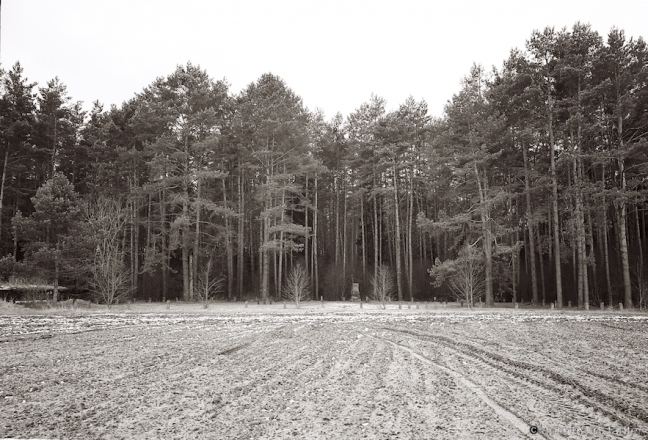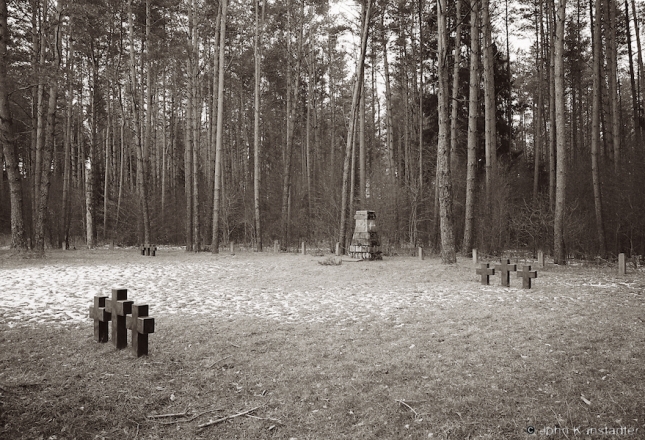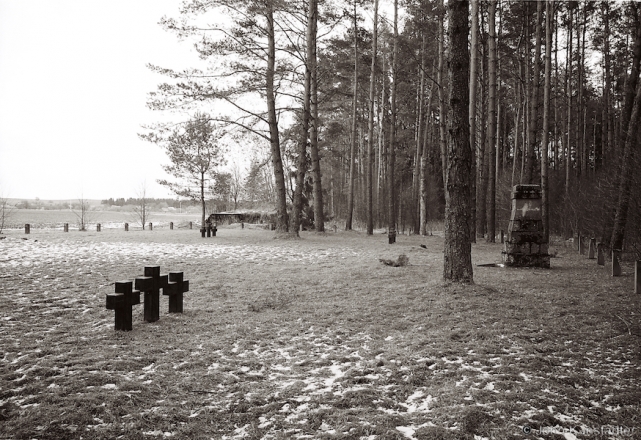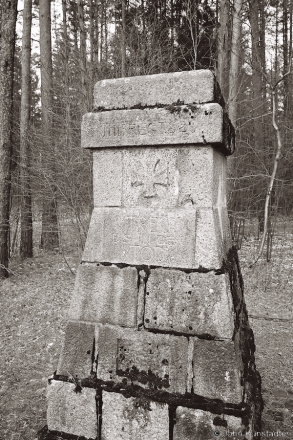Photo survey of the patrimony of Valozhyn District 2016: Navasjolki, Ljutash, Vishnjeva, Klim, Slajkoushchyna, Sakaushchyna, Stajki
Фотавандроўка па спадчыне Валожынскага раёна 2016 г.: Навасёлкі, Люташ, Вішнева, Клім, Слайкоўшчына, Сакаўшчына, Стайкі
Cemeteries and regimental memorials of World War I (part LII): German cemetery and memorial to fallen soldiers of the 329th Infantry Regiment.
From September 1915 to November 1917 the German, Austrian and Russian imperial armies, indifferent to the rights of the Belarusian nation, contested part of the World War I Eastern Front on a static southwest to northeast line across Belarusian lands. According to Belarusian photographer-historian Uladzimir Bahdanau, during that time the German, Austrian and Russian imperial armies established more than 300 military cemeteries along this section of the front. Estimates vary from 106 to more than 150 German cemeteries which remain or whose former sites are locatable.
After World War I the newly-formed German War Graves Commission (Volksbund Deutsche Kriegsgräberfürsorge — VDK or “Volksbund”) paid the government of the Second Polish Republic to look after German war cemeteries on Polish territory. Between 1921 and the Nazi-Soviet invasion of September 1939 Polish territory included the western Belarusian lands (thus Slajkoushchyna). The Poles undertook careful exhumations and where necessary reburied soldiers’ remains under new concrete crosses or tombstones. In many cases German cemeteries contained remains of soldiers from the Russian imperial army; the Poles treated those remains with equal respect.
In stark contrast, at no time did the Soviet regime show interest in honoring Russian imperial army graves in territories under Soviet occupation. After occupying the western Belarusian lands when it invaded Poland in September 1939 together with Nazi Germany and again after driving the Germans out in 1944, the Soviet regime neglected, or allowed the destruction of, World War I cemeteries there. Some local Belarusian authorities continue to allow depredation of German World War I cemeteries to this day, for instance in Bartashy (Shchuchyn District) in 2018.
Regarding sites of Russian cemeteries, since the mid-1960s (i.e., in Kreva), but especially since 1991, Belarusian volunteers have more and more actively placed memorials to honor common graves or, now more frequently, identified soldiers of the Russian imperial army.
Since the collapse of the Soviet empire, the Volksbund has joined the efforts of Belarusian volunteers and local historians to put some of the German World War I cemeteries in Belarus in order,as here in Slajkoushchyna.
Могілкі й палкавыя помнікі Першай сусьветнай вайны (частка LII): нямецкія могілкі й палкавы помнік упалым 329-га палка.
“Treu bis in den Tod”/”True unto death”/”Верны аж да сьмерці”



